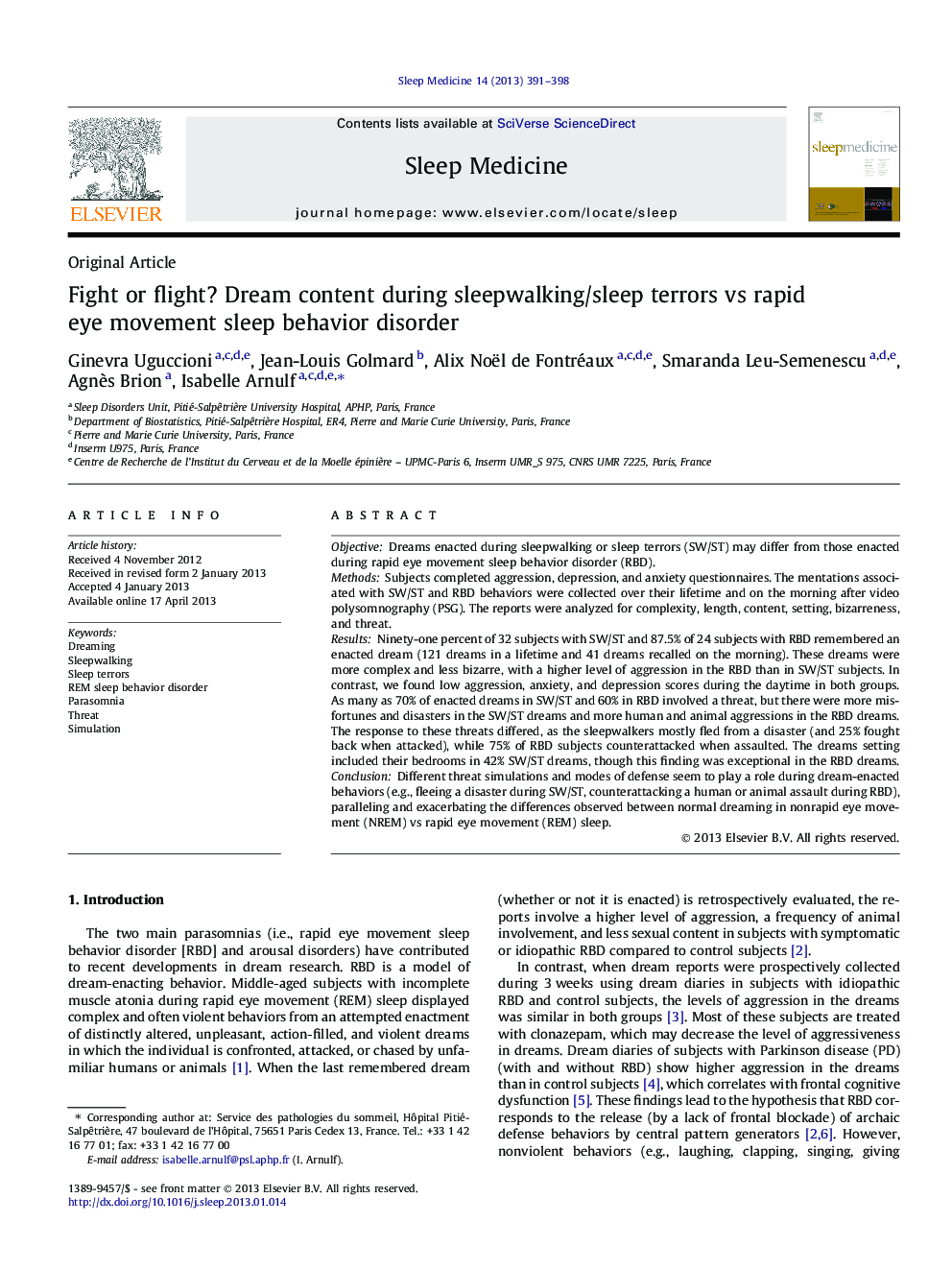| Article ID | Journal | Published Year | Pages | File Type |
|---|---|---|---|---|
| 6061342 | Sleep Medicine | 2013 | 8 Pages |
ObjectiveDreams enacted during sleepwalking or sleep terrors (SW/ST) may differ from those enacted during rapid eye movement sleep behavior disorder (RBD).MethodsSubjects completed aggression, depression, and anxiety questionnaires. The mentations associated with SW/ST and RBD behaviors were collected over their lifetime and on the morning after video polysomnography (PSG). The reports were analyzed for complexity, length, content, setting, bizarreness, and threat.ResultsNinety-one percent of 32 subjects with SW/ST and 87.5% of 24 subjects with RBD remembered an enacted dream (121 dreams in a lifetime and 41 dreams recalled on the morning). These dreams were more complex and less bizarre, with a higher level of aggression in the RBD than in SW/ST subjects. In contrast, we found low aggression, anxiety, and depression scores during the daytime in both groups. As many as 70% of enacted dreams in SW/ST and 60% in RBD involved a threat, but there were more misfortunes and disasters in the SW/ST dreams and more human and animal aggressions in the RBD dreams. The response to these threats differed, as the sleepwalkers mostly fled from a disaster (and 25% fought back when attacked), while 75% of RBD subjects counterattacked when assaulted. The dreams setting included their bedrooms in 42% SW/ST dreams, though this finding was exceptional in the RBD dreams.ConclusionDifferent threat simulations and modes of defense seem to play a role during dream-enacted behaviors (e.g., fleeing a disaster during SW/ST, counterattacking a human or animal assault during RBD), paralleling and exacerbating the differences observed between normal dreaming in nonrapid eye movement (NREM) vs rapid eye movement (REM) sleep.
